- Author: Kathy Keatley Garvey

Theme of annual ESA meeting, taking place Nov. 5-8 at the Gaylord National Resort and Convention Center in National Harbor, Md. is "Insects and Influence: Advancing Entomology's Impact on People and Policy."
Among those participating is UC Davis distinguished emeritus professor Frank Zalom. A highly celebrated entomologist, Zalom is an ESA Fellow (2008), past ESA president (2014), and he holds ESA's highest honor, Honorary Member (2021), an honor achieved by only four other UC Davis entomologists: Harry Lange, 1990; Don MacLean, 1993; Bruce Eldridge, 1996; and John Edman, 2001. He continues his research as a recall professor.
Evolutionary biologist Scott Carroll and his wife, entomologist Jenella Loye, both research associates of the UC Davis Department of Entomology and Nematology and owners of Carroll-Loye Biological Research (CLBR) are also among the participants.
Carroll is the co-author of the newly published “Spatial Sorting Promotes Rapid (mal) Adaptation in the Red-Shouldered Soapberry Bug after Hurricane-Driven Local Extinctions” in the journal, Nature Ecology and Evolution that is drawing worldwide attention.
Officers of ESA, all women scientists, are:
- President: Marianne Alleyne, University of Illinois at Urbana-Champaign
- Vice President: Jennifer Henke, Coachella Valley Mosquito and Vector Control District
- Vice President-Elect: Lina Bernaola, Texas A&M University
- Past President: Jessica Ware, American Museum of Natural History
Founded in 1889, ESA is the largest entomological organization in the world. Its more than 7,000 members are affiliated with educational institutions, health agencies, private industry, and government.
"The premier event of the Society is its annual meeting. Each year approximately 3,500 entomologists and other scientists gather to exchange scientific information. A program of symposia, conferences, submitted papers, and continuing education seminars provides attendees the opportunity to hear and present research results. The meeting also provides a chance to interact informally with peers and prospective employers."--ESA website.
(Editor's Note: Access the ESA program and the list of UC Davis attendees (go to the online program at https://entomology2023.
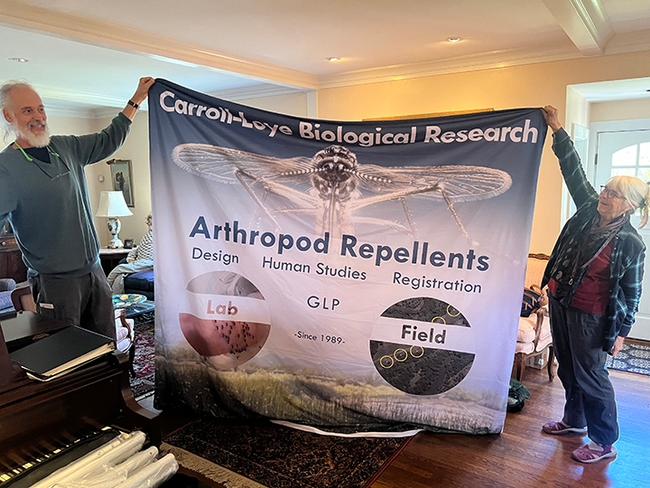
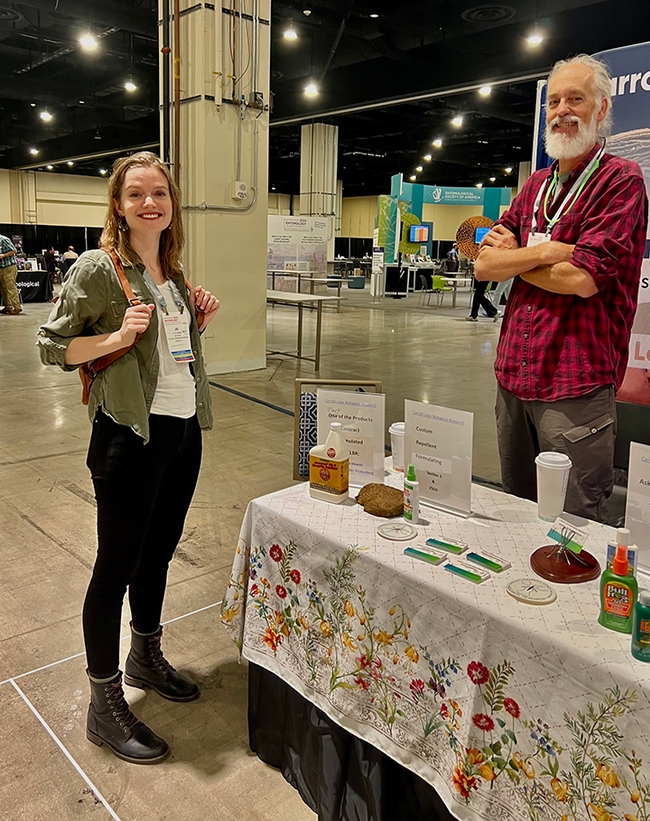
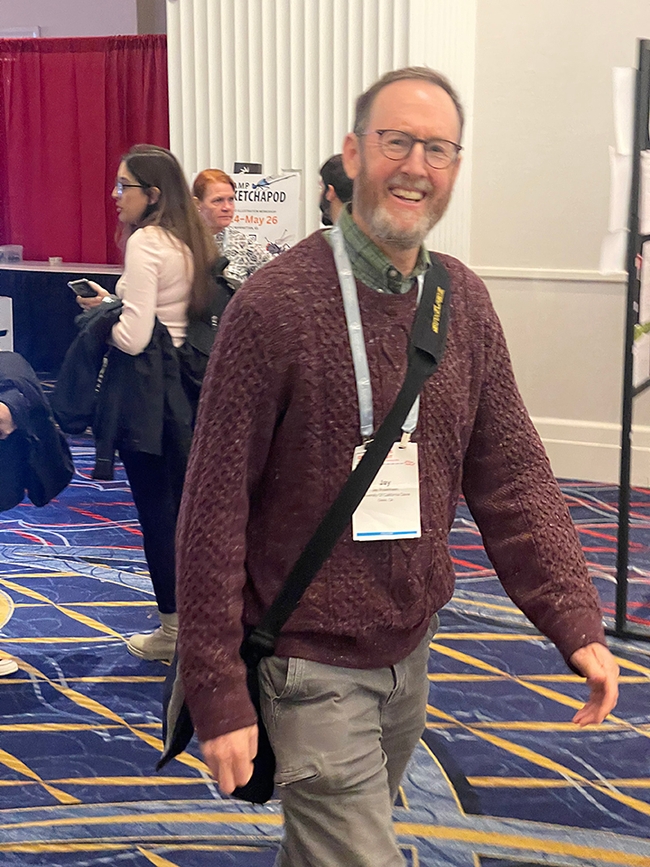
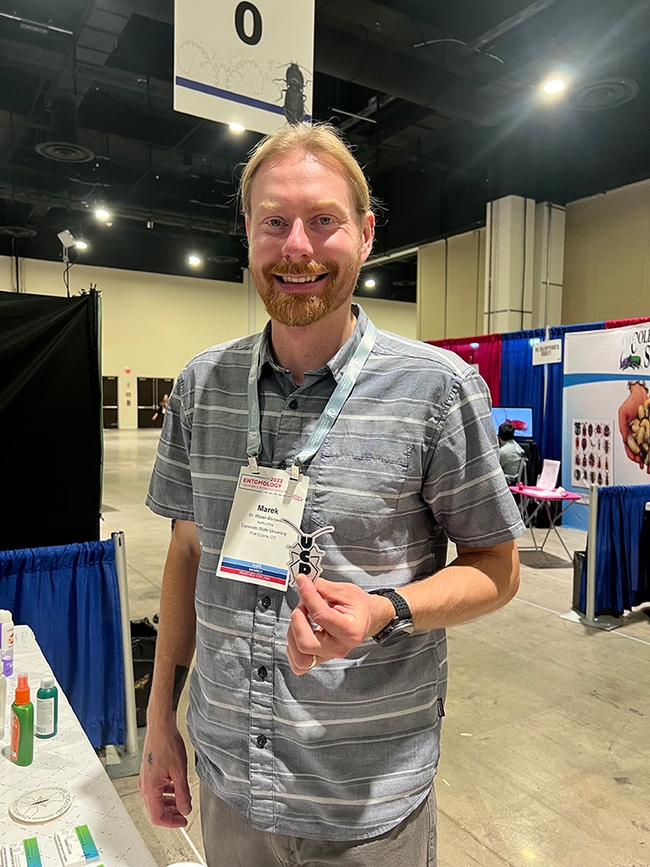
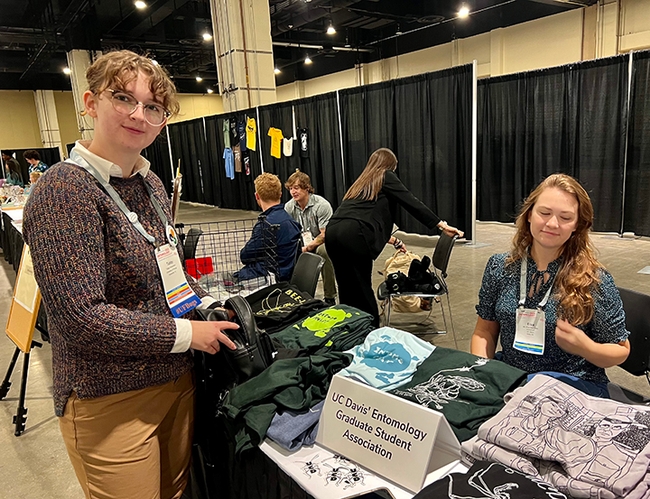

- Author: Kathy Keatley Garvey

“These weather-related catastrophes can cause local extinctions and disrupt ecological interactions,” wrote Carroll and three Texas collaborators in a newly published article in the journal, Nature Ecology and Evolution, “Spatial Sorting Promotes Rapid (mal) Adaptation in the Red-Shouldered Soapberry Bug after Hurricane-Driven Local Extinctions.”
“Such disruptions,” they related, “are expected to become more impactful and frequent in the near future and, consequently, so will the associated regularity of localized extinction and post-disturbance recovery.”
The research team, including Carroll and Mattheau Comerford, Scott Egan and Tatum La of the Department of BioSciences, Rice University, Houston, studied the changes the soapberry bugs went through after “catastrophic flooding in an extreme hurricane” in southeastern Texas.
They found that “long-winged dispersal forms of the soapberry bug, Jadera haematoloma, accumulated in recolonized habitats and due to genetic correlation, mouthparts also became longer and this shift persisted across generations.”
“Those longer mouthparts were probably adaptive on one host plant species but maladaptive on two others based on matching the optimum depth of seeds within their host fruits due to genetic correlation,” they wrote.
Hurricane Harvey, a Category 4 hurricane that made landfall in Texas and Louisiana in August 2017, is known as one of the worst tropical cyclones to hit the United States, resulting in more than 100 deaths and displacing more than 30,000 people. “In a four-day period, many areas received more than 40 inches (1,000 mm) of rain as the system slowly meandered over eastern Texas and adjacent waters, causing unprecedented flooding,” according to Wikipedia.
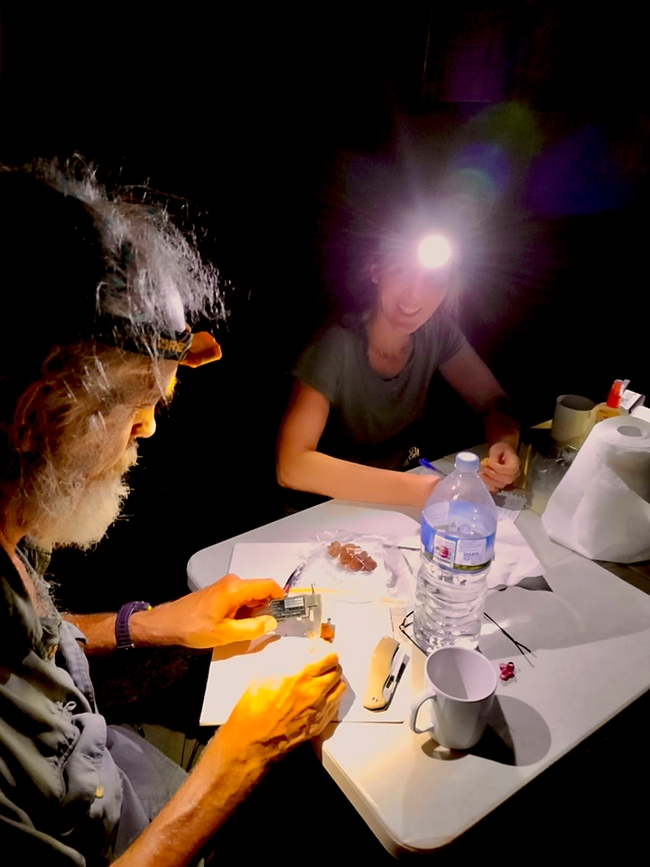
Carroll, who holds a doctorate in biology from the University of Utah, explores contemporary evolution “to better understand adaptive processes and how those processes can be harnessed to develop solutions to evolutionary challenges in food production, medical care and environmental conservation.” He is a research associate in the Department of Entomology and Nematology and the president of the Carroll-Loye Biological Research.“
"Recent work on the biology of invasive species has highlighted ‘spatial sorting' as an underappreciated evolutionary mechanism that relies on dispersal and, thus, promotes rapid evolution across space,” the team wrote.
The authors defined spatial sorting as “a process of dispersing organisms that generates non-random shifts in local phenotype frequencies, such that good dispersers are the first to arrive at the leading edge of invasions or in recolonized habitats. This leads to assortative mating, as only other strong dispersers are present during the time of colonization. For instance, in the current study, mate options at recolonized flooded sites were initially limited to macropterous individuals as wing form during colonization was 100% biased by the ability to fly. Spatial sorting could then be self-reinforcing, as offspring of colonizing individuals are expected to show similar or stronger dispersal phenotypes, along with a higher frequency of genetically correlated traits not associated with dispersal.”
“Soapberry bugs are well-known examples of rapid adaptive evolution in response to Anthropocene environments, where populations on native host species have shifted and adapted to feed on introduced, non-native plants in the same family over the past 60 years,” the authors wrote.
Soapberry Beaks. Soapberry bugs pierce seed pods with needle-like mouthparts, commonly referred to as “beaks.” “The range of mouthpart lengths in nature strongly reflects fruit size of the host plant on which each population feeds and these host-associated differences in beak length evolved through divergent natural selection between hosts,” the authors wrote. “When beak length matches the distance between outer fruit wall and the interior seeds, it increases seed access and decreases handling time, leading to higher fecundity in females. Beak length is a polygenic trait influenced by epistatic and dominance interactions and is highly heritable.”
The study involved three soapberry bug host plant species in the southeastern Texas study area: (1) native balloon vine (Cardiospermum halicacabum), with large inflated seed pods hosting soapberry bugs with the longest beak lengths; (2) native western soapberry tree (Sapindus saponaria var. drummondii, with intermediate-sized seed pods hosting soapberry bugs with intermediate-sized beak lengths; and (3) non-native goldenrain tree (Koelreuteria elegans) with comparatively flat capsules that permit ready access to the seeds.
The authors wrote that Hurricane Harvey “was locally catastrophic for the flooded soapberry bug study populations, with populations at 11 of the 15 monitored sites going locally extinct and remaining so for at least 4.5 months and seven additional populations never returning over the 3 years post-hurricane.” All of the drowned bugs were balloon vine associates; the pods are water dispersed; and many of the sites were deeply inundated. Yet those vines are the most regular seed providers in safe times, and favor the quick developing flightless bugs in consequence. Those individuals had little chance of escape.
Adjoining Viewpoint. In an adjoining viewpoint, titled “Spatial Sorting Creates Winners and Losers,” evolutionary ecologists Swanne Gordon and Caleb Axelrod of Cornell University's Department of Ecology and Evolution, said the research provides “evidence of the role of spatial sorting in recolonization by soapberry bugs after a catastrophic event.”
“We are currently experiencing a concerning increase in catastrophic environmental disturbances on Earth, which presents a pressing challenge for both ecological systems and human societies,” Gordon-Axelrod wrote. “These disturbances--encompassing events such as hurricanes, wildfires and droughts--can have marked short-term and long-term impacts on ecosystems.”
Comerford, Carroll and Egan conceived the focus of the paper; Comerford and La performed the data collection; and Comerford and Egan shared writing responsibilities with feedback from Carroll and La.
The project drew financial support from grants from the American Museum of Natural History, American Philosophical Society, Society for the Study of Evolution for dissertation support to Comerford, and the National Science Foundation to Egan and Carroll.
All data collected for this project are freely available in the digital repository Dryad: https://doi.org/10.5061/dryad.tht76hf4t.
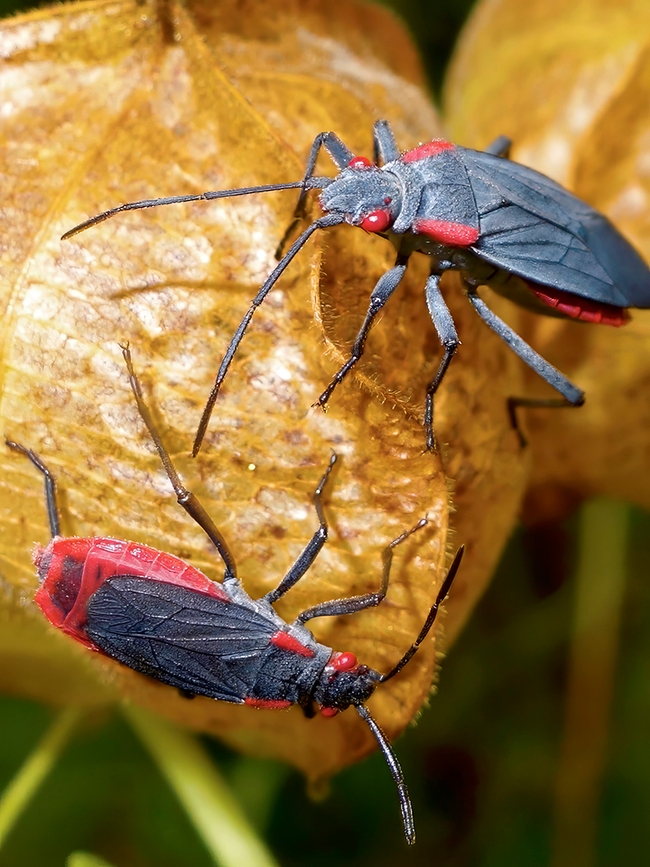
- Author: Kathy Keatley Garvey
Myfany Turpin of the University of Sydney will speak on "Grub's Up! The Category of Edible Insect Larvae in Central Australian Aboriginal Languages" at the UC Davis Entomology and Nematology's virtual seminar at 4:10 p.m., Wednesday, Oct. 7.
This is the first of a series of fall seminars hosted by the department and coordinated by Ian Grettenberger, Cooperative Extension specialist and assistant professor.
"Dr. Turpin is a linguist and musicologist that has worked on the use of insects as aboriginal food sources," Grettenberger said.
Her abstract: "Edible insect larvae constitute a large part of the traditional Australian Aboriginal diet. Perhaps the most widely known example is the ‘Witchetty grub' (Endoxyla spp.). These played a role similar to that of a pacifier for infants being weaned. The term ‘witchetty' is the common name of the tree whose roots this popular grub dwells in (Acacia kempeana). The naming of specific larvae based on their host tree is a common naming strategy in the Aboriginal language Kaytetye, for which there are some 25 ethnospecies. This paper draws on Kaytetye people's knowledge, uses and naming of ethnospecies within the 'edible insect larvae' food class, which is one of five Kaytetye food classes."
In an article on "Edible Insect Larvae in Kaytetye: Their Nomenclature and Significance," published in March 2017 in the Journal of Ethnobiology, she wrote: "Insects have traditionally constituted an important source of food in many cultures, but changes in dietary practices and other lifestyle traits are threatening the transmission of insect-related knowledge and vocabulary to younger generations of Indigenous Australians. This paper describes the rich cultural and culinary traditions surrounding an important insect group, namely a class of edible insect larvae consumed by a desert community in central Australia. Twenty-nine different edible insect larvae are named in the Kaytetye language, with the names encoding the identity of the host plant on which the larvae are found. We describe the complexities involved in the naming system, paying special attention to cultural and linguistic factors. The difficulties in the scientific identification of these ethnotaxa are discussed, as are the significance of our data to (1) questions of universal patterns in ethnoclassification and nomenclature and (2) the purported lack of binomially-labeled folk species in the languages of hunter-gatherer societies."
Turpin, with the Sydney Conservatorium of Music, has been working on Australian Aboriginal songs and languages since 1996, according to her website. "Her research interests include the relationship between language and music, especially of lesser-known cultures; and identifying ways to support the continuation of endangered languages and performance arts. More specifically, her work examines Aboriginal song-poetry and its relationship to spoken languages. She is also involved in linguistic documentation of the Aboriginal language Kaytetye as well as Indigenous ecological knowledge and the lexicon in Arandic languages."
Turpin's hosts are evolutionary ecologists and biologists Scott Carroll and Jenella Loye of the Institute for Contemporary Evolution who engage in Carroll-Loye Biological Research. The scientists are affiliated with the Sharon Lawler lab, UC Davis Department of Entomology and Nematology.
"I've visited her pioneering entomophagy studies among the remnant, so-called 'remote' central Australian peoples," said Carroll. "Academic entomologists know almost nothing about the biology of these insects. I learned that Giant Moth witchetty grubs are the most delicious, energy-packed animals I have ever eaten. Myf will tell us about these and many more that have been central to the diets of Australians. I am looking forward to this exciting interdisciplinary seminar."
Link to form for Zoom link and instructions: https://forms.
For technical issues, contact Grettenberger at imgrettenberger@ucdavis.edu. For more information on the seminar speaker, contact Scott Carroll or Jenella Loye at scott@carroll-loye.com.
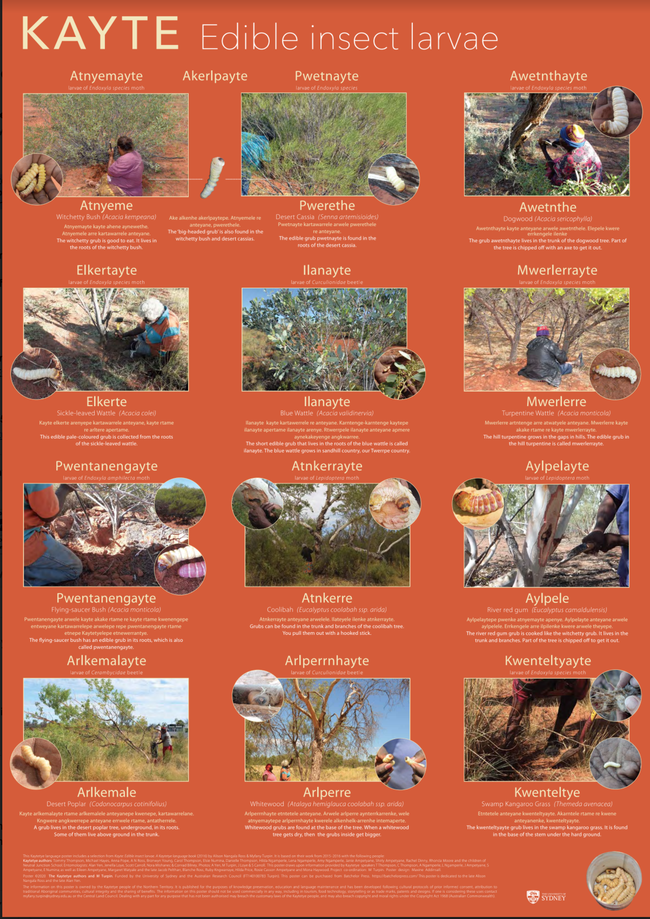
- Author: Kathy Keatley Garvey
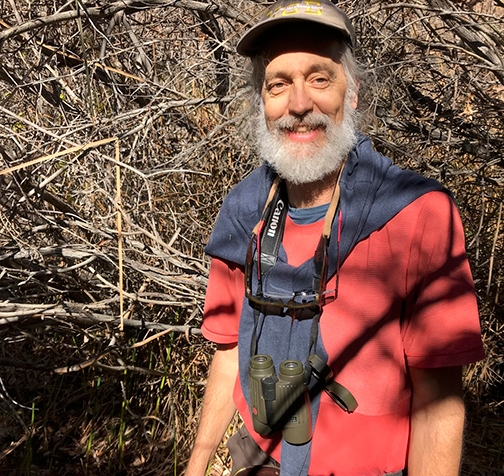
A team of nine researchers, including UC Davis biologist Scott Carroll, analyzed data over a six-year period and concluded that crop rotation works well in battling the notorious pest that annually causes $800 million in yield loss and $200 million in treatment costs.
“Answering this question was important not only to grower success but the agricultural economy, said Carroll, an associate of the UC Davis Department of Entomology and Nematology and owner of the Davis-based Institute for Contemporary Evolution. “Bt crops are far-and-away the single most important factor reducing soil and crop insecticide applications in the United States at present.”
When Bacillus thuringiensis (Bt) corn was introduced in 2003, the pest seemed under control. The genetically engineered corn is a transgenic, insecticidal crop that kills rootworm larvae but is harmless to humans.
However, when the pest began developing resistance to the Bt corn toxins, the U.S. Department of Agriculture recommended crop rotation as a method of control. Crop rotation, an age-old agricultural tactic, is a consistent and economical means of controlling rootworms the season following an outbreak. It reduces rootworm densities, and is considered more effective than insecticides.
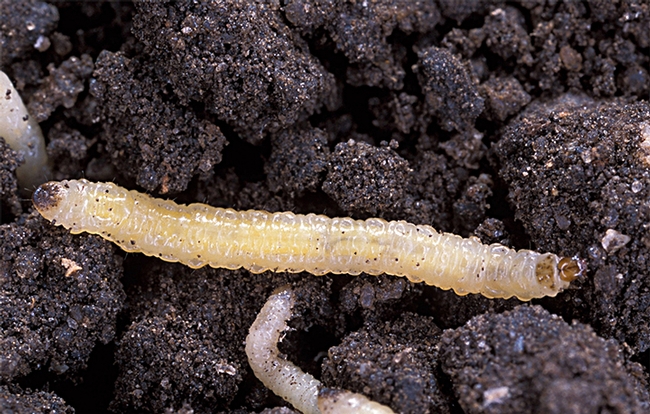
“Corn rootworm is one of the nation's most devastating pests, giving a sense of urgency to protecting the efficacy of industrial pest control approaches with reduced non-target effects,” said Carroll, who studies basic and applied aspects of evolutionary biology. “Transgenic insecticidal Bt crops in the United States are cultivated under a very interesting socio-evolutionary model of resistance management that is mandated by the U.S. Environmental Protection Agency. Individual growers must implement resistance management--usually by devoting a small acreage to planting a 'refuge' of non-Bt crops in order to nurture a local reservoir population of Bt-susceptible pest insects.”
Carroll pointed out that the “outstanding productivity of Bt corn has led a portion of growers to reduce or eliminate their required refuge planting. Moreover, many time-tested practices for integrated pest management have fallen by the wayside as growers have found they could rely solely on the genetics of the seemingly invulnerable Bt varieties.”
“As predicted, Bt resistance evolution in corn rootworm has accelerated. In response to this dire risk, in 2016 EPA began mandating crop rotation as a complementary means of reducing the damage to Bt corn fields caused by resistant corn rootworms. Our working group analyzed the success of this traditional agricultural tactic to help sustain the efficacy of the high-tech Bt tactic.”
Carroll said that under the leadership of his colleague Yves Carrière at the University of Arizona, “our team analyzed six years of field data from 25 crop reporting districts in Illinois, Iowa and Minnesota—three states facing some of the most severe rootworm damage to Bt cornfields.
“The answer we found is that traditional crop rotation is working to protect the Bt corn fields from rootworm damage, including in areas that have seen the evolution of behavioral resistance to crop-rotation by rootworms.”
The bottom line, said Carrière, is this: "Farmers have to diversify their Bt crops and rotate. Diversify the landscape and the use of pest control methods. No one technology is the silver bullet.”
The project also included scientists from North Carolina State and McGill University, along with Carroll's colleague, Peter Jørgensen of the Stockholm Resistance Center.
While Jorgensen was pursuing his master's degree program at the University of Copenhagen and studying at UC Davis, he worked with Carroll and Sharon Strauss of the Department of Evolution and Ecology.
“This PNAS paper,” Carroll said, “is one of several that have developed from a pursuit Peter and I organized on 'Living with Resistance' at the National Socio-Environmental Synthesis Center in Annapolis, with the aim to explore more sustainable approaches to managing evolutionary challenges to health and food security.”
The abstract:
"Transgenic crops that produce insecticidal proteins from Bacillus thuringiensis (Bt) can suppress pests and reduce insecticide sprays, but their efficacy is reduced when pests evolve resistance. Although farmers plant refuges of non-Bt host plants to delay pest resistance, this tactic has not been sufficient against the western corn rootworm, Diabrotica virgifera virgifera. In the United States, some populations of this devastating pest have rapidly evolved practical resistance to Cry3 toxins and Cry34/35Ab, the only Bt toxins in commercially available corn that kill rootworms. Here, we analyzed data from 2011 to 2016 on Bt corn fields producing Cry3Bb alone that were severely damaged by this pest in 25 crop reporting districts of Illinois, Iowa, and Minnesota. The annual mean frequency of these problem fields was 29 fields (range 7 to 70) per million acres of Cry3Bb corn in 2011 to 2013, with a cost of $163 to $227 per damaged acre. The frequency of problem fields declined by 92% in 2014 to 2016 relative to 2011 to 2013 and was negatively associated with rotation of corn with soybean. The effectiveness of corn rotation for mitigating Bt resistance problems did not differ significantly between crop-reporting districts with versus without prevalent rotation-resistant rootworm populations. In some analyses, the frequency of problem fields was positively associated with planting of Cry3 corn and negatively associated with planting of Bt corn producing both a Cry3 toxin and Cry34/35Ab. The results highlight the central role of crop rotation for mitigating impacts of D. v. virgifera resistance to Bt corn."

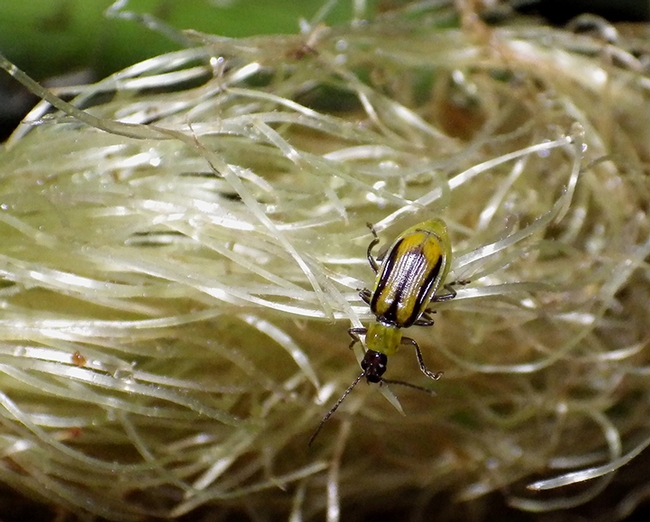
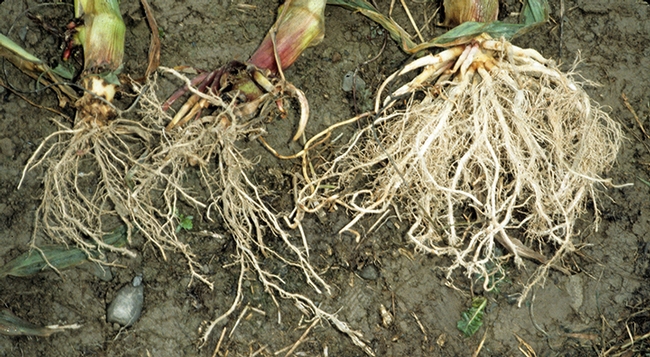
- Author: Kathy Keatley Garvey
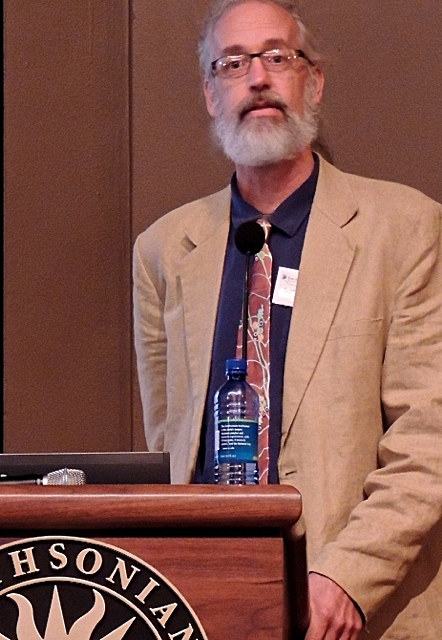
In a paper titled “Use Antimicrobials Wisely,” published in the current edition of Nature, a nine-member international research team, including Carroll, advocates that the United Nations reframe its action on antimicrobial resistance.
The United Nations is meeting in New York on Sept. 21 to discuss the global antimicrobial drug resistance (AMR) crisis.
“We're concerned about what will happen if the proposed UN solutions focus mainly on incentives for new drug development, at a time when the drug industry itself is abandoning those efforts against infectious disease due to AMR,” said Carroll, who co-leads the international group on resistance to pesticides and antimicrobial drugs. He founded and directs the Institute for Contemporary Evolution, Davis, and is a member of the Sharon Lawler lab, UC Davis Department of Entomology and Nematology.
The paper, published in the Comment section, is the first product from a two-year working group sponsored by the National Socio-Environmental Synthesis Center in Annapolis, Maryland. “We are taking a similar socio-environmental approach in our concurrent work on pesticide stewardship,” Carroll said.
“While new drugs have a role, we think it's more important for society to learn how to steward pathogen susceptibility, so we develop that theme in the paper,” Carroll said. “And because we also depend on microbes for digestion, immunity, and general health, and microbes support ecosystem functioning through nutrient cycles and the maintenance of soil and water quality, we further argue that our AM drug habits and waste streams threaten both personal and planetary health. “
Lead authors of the paper are Peter Jorgensen of Stockholm, Sweden, and Didier Wernli of Geneva Switzerland. Jørgensen, who spent part of his Danish graduate program working with Carroll in Davis, is now a postdoctoral researcher at the Royal Swedish Academy of Science, Stockholm.
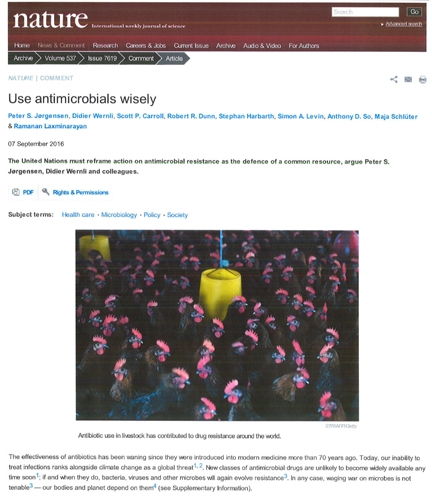
Carroll described AMR as more than a medical dilemma—it's a socio-ecological problem. “The vulnerability of pathogens to antimicrobial drugs is a communal resource, readily threatened by overuse, to be lost as a classic 'tragedy of the commons.' There is a lot of contemporary theory for social resilience in the face of socio-ecological challenges, and– linking to entomology– the early success of the pioneering management of Bt crop pest resistance evolution is an encouraging precedent.”
In its planetary health approach, the group seeks to be “more cognizant not only of preserving drug susceptibility in pathogenic microbes, but also protecting from wholesale destruction the community of microbes on which we depend for life,” Carroll said.
In the paper, the scientists pointed out that “Resistance affects animal and environmental health as well as human health, and so requires coordinated action across economic sectors. No single concern exemplifies this better than the high rate of antibiotic use in agriculture (largely as growth promoters or disease prevention).” They wrote that in the United States, 70 to 80 percent of all anti-microbials consumed are given to livestock.”



